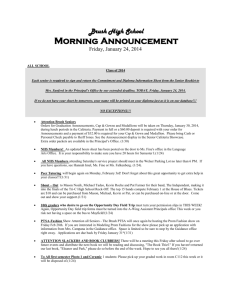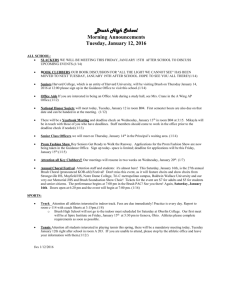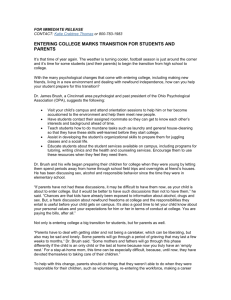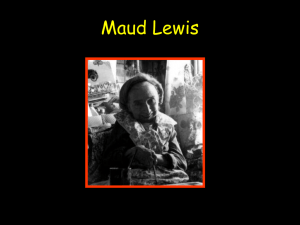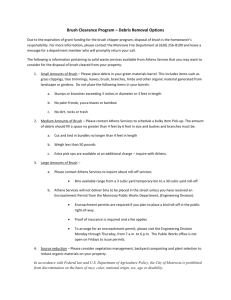Novel Laboratory Methods of Evaluating Tooth Stain Removal R.D.
advertisement
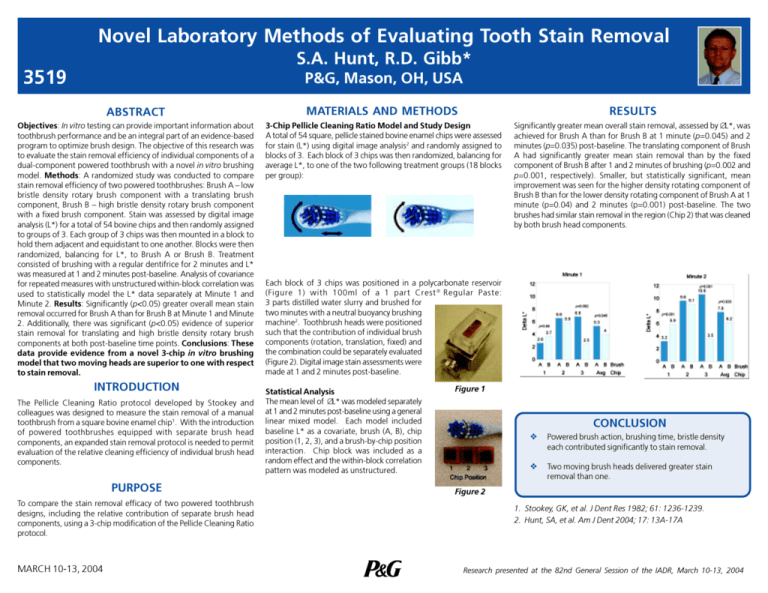
Novel Laboratory Methods of Evaluating Tooth Stain Removal S.A. Hunt, R.D. Gibb* 3519 P&G, Mason, OH, USA ABSTRACT MATERIALS AND METHODS RESULTS Objectives: In vitro testing can provide important information about toothbrush performance and be an integral part of an evidence-based program to optimize brush design. The objective of this research was to evaluate the stain removal efficiency of individual components of a dual-component powered toothbrush with a novel in vitro brushing model. Methods: A randomized study was conducted to compare stain removal efficiency of two powered toothbrushes: Brush A low bristle density rotary brush component with a translating brush component, Brush B high bristle density rotary brush component with a fixed brush component. Stain was assessed by digital image analysis (L*) for a total of 54 bovine chips and then randomly assigned to groups of 3. Each group of 3 chips was then mounted in a block to hold them adjacent and equidistant to one another. Blocks were then randomized, balancing for L*, to Brush A or Brush B. Treatment consisted of brushing with a regular dentifrice for 2 minutes and L* was measured at 1 and 2 minutes post-baseline. Analysis of covariance for repeated measures with unstructured within-block correlation was used to statistically model the L* data separately at Minute 1 and Minute 2. Results: Significantly (p<0.05) greater overall mean stain removal occurred for Brush A than for Brush B at Minute 1 and Minute 2. Additionally, there was significant (p<0.05) evidence of superior stain removal for translating and high bristle density rotary brush components at both post-baseline time points. Conclusions: These data provide evidence from a novel 3-chip in vitro brushing model that two moving heads are superior to one with respect to stain removal. 3-Chip Pellicle Cleaning Ratio Model and Study Design A total of 54 square, pellicle stained bovine enamel chips were assessed for stain (L*) using digital image analysis2 and randomly assigned to blocks of 3. Each block of 3 chips was then randomized, balancing for average L*, to one of the two following treatment groups (18 blocks per group): Significantly greater mean overall stain removal, assessed by ∆L*, was achieved for Brush A than for Brush B at 1 minute (p=0.045) and 2 minutes (p=0.035) post-baseline. The translating component of Brush A had significantly greater mean stain removal than by the fixed component of Brush B after 1 and 2 minutes of brushing (p=0.002 and p=0.001, respectively). Smaller, but statistically significant, mean improvement was seen for the higher density rotating component of Brush B than for the lower density rotating component of Brush A at 1 minute (p=0.04) and 2 minutes (p=0.001) post-baseline. The two brushes had similar stain removal in the region (Chip 2) that was cleaned by both brush head components. INTRODUCTION The Pellicle Cleaning Ratio protocol developed by Stookey and colleagues was designed to measure the stain removal of a manual toothbrush from a square bovine enamel chip1. With the introduction of powered toothbrushes equipped with separate brush head components, an expanded stain removal protocol is needed to permit evaluation of the relative cleaning efficiency of individual brush head components. PURPOSE To compare the stain removal efficacy of two powered toothbrush designs, including the relative contribution of separate brush head components, using a 3-chip modification of the Pellicle Cleaning Ratio protocol. MARCH 10-13, 2004 Each block of 3 chips was positioned in a polycarbonate reservoir (Figure 1) with 100ml of a 1 part Crest Regular Paste: 3 parts distilled water slurry and brushed for two minutes with a neutral buoyancy brushing machine2. Toothbrush heads were positioned such that the contribution of individual brush components (rotation, translation, fixed) and the combination could be separately evaluated (Figure 2). Digital image stain assessments were made at 1 and 2 minutes post-baseline. Statistical Analysis The mean level of ∆L* was modeled separately at 1 and 2 minutes post-baseline using a general linear mixed model. Each model included baseline L* as a covariate, brush (A, B), chip position (1, 2, 3), and a brush-by-chip position interaction. Chip block was included as a random effect and the within-block correlation pattern was modeled as unstructured. Figure 1 CONCLUSION v Powered brush action, brushing time, bristle density each contributed significantly to stain removal. v Two moving brush heads delivered greater stain removal than one. Figure 2 1. Stookey, GK, et al. J Dent Res 1982; 61: 1236-1239. 2. Hunt, SA, et al. Am J Dent 2004; 17: 13A-17A Research presented at the 82nd General Session of the IADR, March 10-13, 2004

